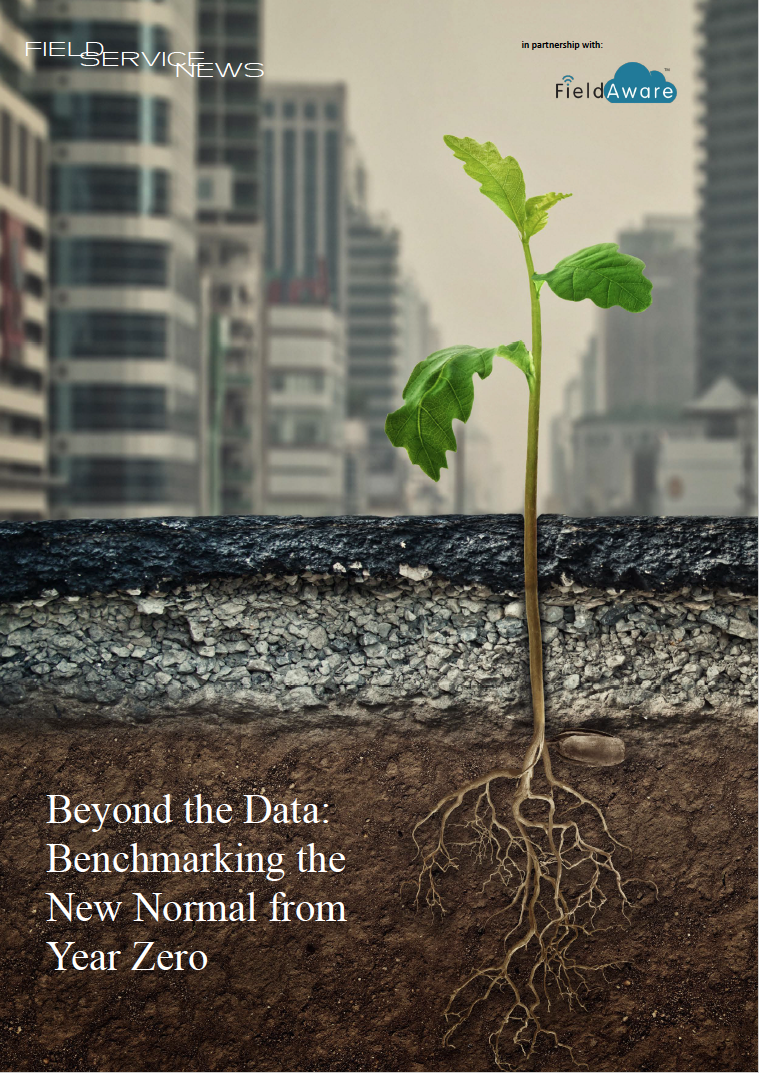Before the pandemic our industry was heading down a path towards becoming a much more customer-centric sector. In one way the last twelve months has truly affirmed the importance of being close to our customers, yet in another, the enormous financial pressure could see cracks emerge in the belief of advanced services and drive us towards back to more transactional relationships…
Having undertaken an extensive research project with FieldAware in the latter months of 2020 we released a ground-breaking report that identified the emerging trends of the new normal. Having assessed the sectors opinions at the time we then returned to interview a selection of the respondents to go Beyond the Data and leverage deeper insight.
The following article is an excerpt from a report based upon those interviews as well as our exclusive debrief session.
Mason’s point around the closeness to the customer is one that companies of all sizes should note. As he points out, customer proximity was one of the advantages smaller, more agile companies had in dealing with the pandemic’s fallout.
However, we have been on a path towards greater customer-centricity in the field service sector for a long time, and many larger companies have baked such an approach into their core strategies.
As we begin to extrapolate further insight from the data to identify the key pillars of the new normal for our industry, it is essential to determine if this path towards ever-closer partnership with our customers will continue or will the financial pressures we are seeing push us back towards a more transactional-based economy?
In the initial study, we asked respondents if they implemented a prioritization method for service calls due to the pandemic, which could potentially remove some of that ‘closeness’ to our customers we have been working towards. For every customer that is a priority, there will be those who become less critical. Could dividing customers into such brackets, while being a necessary evil to overcome the challenges of operating in lockdown conditions, negatively impact customer relationships.
Of course, priorities were essential; we had to keep the world turning as best we could and field service technicians and engineers were a core component of the essential workforce that was able to get us through the most challenging of times.
Our initial study showed that almost two-thirds (63%) of companies had implemented such an approach. However, perhaps a better indicator of what lies in wait in the future was that nearly half (49%) of the respondents believe that such prioritization levels will remain.
“Priorities were essential; we had to keep the world turning as best we could and field service technicians and engineers were a core component of the essential workforce that was able to get us through the most challenging of times…”
In our follow up interviews, this was a topic that divided opinion.
“We had to introduce measures to prioritize service calls,” commented one respondent a national head of service for a German manufacturing company.
“However, I don’t think that is something that should remain too rigidly in place beyond the pandemic. Of course, we have escalation protocols and so forth. Still, to the degree that we had to prioritize work, particularly in the initial period of lockdowns around Spring last year, I do not think this is a good idea.
“These were unprecedented times, our capacity was reduced, and we were dealing with challenges that we had never faced before. Our customers, at this point, knew and understood this.
“However, even during the second lockdowns in the latter part of the year, there was a greater expectation that we should be able to deliver service still. We should be able to have adapted to the new parameters by this time.
“Ultimately, each of our customers want to think they are our priority, and that is right. We need to be able to make sure they feel that and meet that expectation.”
“I think this was a particularly interesting finding of the research,” commented Marc Tatarsky, SVP of Marketing at FieldAware during our debrief session.
“We were not surprised at the need to prioritize work. Who goes on site, when they go on site, how frequently they’re going to go on site – we would expect to see that given the circumstances.
“However, when it comes to the continuation of that, I think what we are seeing is the combination of both a change in the process that needs to happen within service organizations, but also changing expectations on the customer side, in terms of valuing when on-site services are needed versus when problems can be resolved remotely,” he adds.
“Ultimately, each of our customers want to think they are our priority, and that is right. We need to be able to make sure they feel that and meet that expectation…”
This is a very interesting observation.
It is evident that there has been a swing towards remote service delivery adoption as a result of the pandemic and the speed and convenience of such tools when deployed at a sophisticated level could open the doors to freeing up subject matter experts for more complex priority work while maintaining capacity to handle more routine maintenance.
As Tatarsky continues; “I think, the impact [of the pandemic] both revenue-wise, and in terms of processes, is something that field service organizations need to make sure they have the infrastructure to be able to support.
“They need to be able to segment out the workforce, both from a workforce management perspective, but also from the assignment of the work orders that are coming in, based on the types of skills and the types of delivery model being used.
“That impact can be significant for some organizations to be able to roll through, from a technology standpoint, from a process standpoint, and also from a staffing standpoint.”
 If you are a FSN PRO subscriber you can access a full 16 page report written by Field Service News, Editor-in-Chief, Kris Oldland that offers in-depth analysis of the final wave of interviews within this study now. Access it here
If you are a FSN PRO subscriber you can access a full 16 page report written by Field Service News, Editor-in-Chief, Kris Oldland that offers in-depth analysis of the final wave of interviews within this study now. Access it here
If you are not yet a subscriber to Field Service News but would like to subscribe and gain access to this report instantly, click the button to be visit a dedicated registration page for our complimentary sponsored subscription tier FSN Standard and that will give you instant access to this paper and a selection of other assets currently available to subscribers on this tier.
 Data usage note: By accessing this content you consent to the contact details submitted when you registered as a subscriber to fieldservicenews.com to be shared with the listed sponsor of this premium content, FieldAware who may contact you for legitimate business reasons to discuss the content of this report.
Data usage note: By accessing this content you consent to the contact details submitted when you registered as a subscriber to fieldservicenews.com to be shared with the listed sponsor of this premium content, FieldAware who may contact you for legitimate business reasons to discuss the content of this report.














